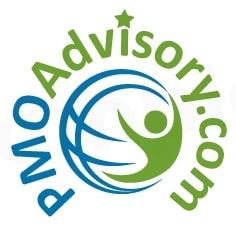 Since my project management career has had me focus on the areas of Agile project management and risk management, I thought it fitting to discuss Agile risk management. When I first broached this subject with Agile Scrum practitioners, I was told it was not needed as risk management is not needed with Agile Scrum, since Scrum eliminates project risk. I dare say that I do not agree with this statement at all. Yes, Agile in general and Scrum in particular does significantly reduce project scope risk, but I don’t think the Scrum framework or any other Agile method completely eliminates project risk.
Since my project management career has had me focus on the areas of Agile project management and risk management, I thought it fitting to discuss Agile risk management. When I first broached this subject with Agile Scrum practitioners, I was told it was not needed as risk management is not needed with Agile Scrum, since Scrum eliminates project risk. I dare say that I do not agree with this statement at all. Yes, Agile in general and Scrum in particular does significantly reduce project scope risk, but I don’t think the Scrum framework or any other Agile method completely eliminates project risk.
After further research, investigation, and experimentation of my own, I did find some tools and techniques to manage project risks for Agile projects and I highly recommend these, as no project is without uncertainty (risk) and therefore it must be managed. Furthermore, risk management is not only about negative risks (threats) but also about positive risks (opportunities). For Agile projects this translates to value for the customer when these opportunity risks are realized as project benefits. Since Agile projects are focused on value and inherently manage scope risk, would we not want to intentionally manage both positive and negative risks for Agile projects?
Agile risk management is inherent in the practice of continued ‘Inspection and Adaptation’. The focus of Agile risk management is on maximizing value (opportunity), in addition to minimizing threats. Regular and iterative inspection should be completed for good Agile project management. (This may be part of the iteration retrospective.) Regular capturing of lessons learned is also important, as agility is the team’s ability to respond to change. The focus of Agile is value, as previously mentioned. An area for implementing quantitative risk management in Agile is within Software Development Performance Agility. This entails both Response Efficiency (evaluating: time, cost, and resources to respond to changes) and Response Extensiveness (for example, a metric of 80% changes are incorporated). With both of these, it is important to measure the effectiveness of the metrics used. Keep in mind that response efficiency effects: scope, time and cost; whereas response extensiveness only effects scope (functionality of the product developed).
Risk Management is built into Agile Practices. It is integrated in Agile, but not transparent. It is important that we make it transparent, so it may be effective. In the second part of this article, I will explore how risk is reviewed during as part of Agile project management and how risk management is implementing in Agile project management. – Susan Parente, PMP, PMI-RMP, PMI-ACP, PSM I, CSM, CSPO, CISSP, CRISC, RESILIA, ITIL, MS Eng. Mgmt.
In response to the growth in adoption of Agile Project Management, Susan Parente and PMO Advisory, a PMI® (Project Management Institute) Registered Education Provider and New Jersey’s leading project management training & consulting firm, is regularly delivering a 1 Day Agile & Scrum Fundamentals Workshop and a 2 Day PMI-ACP (Agile Certified Practitioner) Certification Prep Course. Both courses are offered regularly at the PMO Advisory training center in New Jersey and to people everywhere live instructor led online.
With our 1 Day Agile & Scrum Fundamentals Workshop our proprietary approach to hands on learning will give you the ability and confidence to implement Agile methodologies on your first day back in the office. Our 2 Day PMI-ACP Certification Prep Course is designed to enable you to pass the Project Management Institute’s Agile Certified Practitioner’s exam on the first try. Click here to learn more, our next scheduled courses, and to receive a discount coupon for either our 1 Day Agile & Scrum Fundamentals course or our 2 Day PMI-ACP Certification Prep course.
